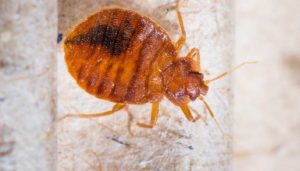Bed bugs can be spread in a myriad of ways, but how fast do bed bugs spread? Bed bugs will spread quite rapidly given the right conditions. They can spread through:
- Reproduction
- Travel
- Hitchhiking
Reproductive speed
The prolific reproduction is a key factor in the spreading of bed bug populations. So, how fast do bedbugs spread via reproduction? A female bed bug may lay between 1 and 5 eggs per day. 1 to 5 doesn’t sound like too big of a deal, but over the life of a single female, this can add up to 500 eggs over the life of the bed bug. With each additional bed beg, the population pressure increases the likelihood of some of the bed bugs venturing out to new host sites.
Traumatic Inception
In addition to normal population pressures, bed bugs have an additional element that accelerates population expansion. They reproduce via traumatic inception. This means that the female’s abdomen is punctured by the male. In many cases, self preservation will cause the impregnated female to flee the population. From there, the female may lay eggs in a new location and return to the population or simply stay in the new area. Either way, this particular process expands the geographic coverage.
Travel Speed
Bed bugs are efficient pests. Because of this, they do not waste energy and effort where it is not needed. If one learns that hiding in a specific crack in a headboard will put it within a few inches of a host to feed on once per day, there is no reason for it to hunt for another place to hide and feed. Typically, a bed bug is only going to venture out to find a new home if:
- conditions become uncomfortable
- population pressures force it out
- loss of a host
- loss of cover
- traumatic inception
Once a bed bug decides it is going to start walking (better described as crawling from our perspective), it can move quite quickly. So, how fast do bedbugs spread on foot? A bed bug can move at about 3 to 4 feet per minute on most surfaces. This may not sound impressive at first glance, but when you adjust for body size, it is the equivalent of the average human at a hard run.
Hitchhike speed
Bed bugs are master hitchhikers. The speed at which they hitchhike is entirely dependent upon the luck of the draw. If a bed bug finds its way into the tread of a child’s shoe, it will only travel as quickly as that child runs or walks. If the bed bug catches a ride on some carry on luggage, it could find itself traveling half way around the world in a matter of hours.
But how slowly can they spread?
Though counterintuitive, it is important to know how long a bed bug can lie dormant. If a bed bug is in good health going into a starvation mode in good humidity and temperature conditions, it can survive for about a year without a blood meal. The reason this is important is especially relevant in terms of vacancies. Just because a unit has been unoccupied for several months, it does not mean it is free and clear of pests.
Inspections and treatment
If you suspect you have bed bugs or would even simply like an educational seminar for your staff, don’t hesitate to reach out to the bed bug experts at Rove Pest Control. From expertise in inspections to fast and effective heat treatments, Rove has you covered.
